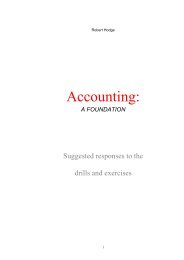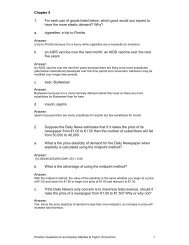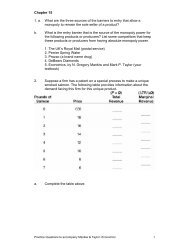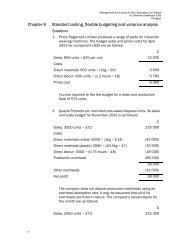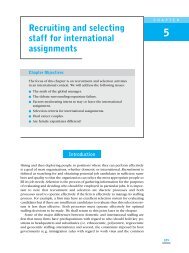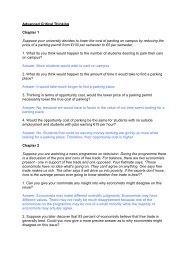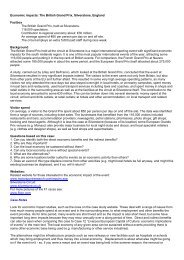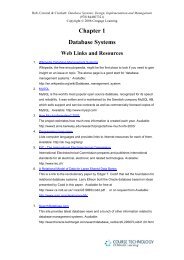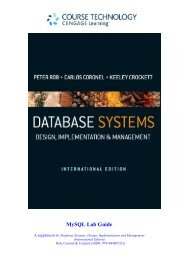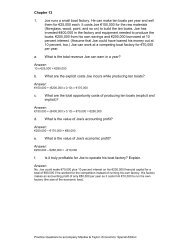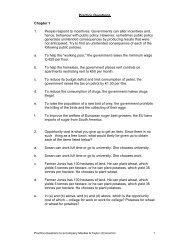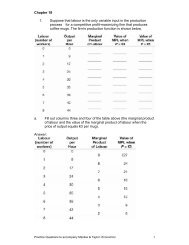You also want an ePaper? Increase the reach of your titles
YUMPU automatically turns print PDFs into web optimized ePapers that Google loves.
CalculationsOutputFunds investedCapital gain/lossTotal € dividendsEuro returnPercent returnCalculate funds invested by multiplying the beginning price by the number of shares purchased.You should find that your euro returns was €397.50 which translates into a percentage return of24.8%. Your sister had a higher euro return, €416.25, but a lower percent return, 18.7%, due to herhigher initial investment.Apply itWhat if you change the number of shares purchased?Suppose you each purchase 100 shares.The euro return varies (you earn €795 and she earns €555.), but the percent returns are notaffected because the return on investment remains constant.NOMINAL AND REAL RETURNSCreate a simple model in Excel to solve for real or nominal returns.Problem: You are considering a one-year investment with a nominal return of 11%. You thinkinflation will be 2.5% this year. If so, what is your expected real rate of return?To determine the real rate of return, use the text equation:(1+ nominal return) = (1+ real return) * (1+ inflation rate)Solving the equation for real return yields:Real return = (1+ nominal return) / (1+ inflation rate) – 1Approach: Set up a basic model to solve for the real rate of return.Try it yourself in a blank Excel file. Think about what to include in inputs and how to set up yourcalculations and output. Alternatively, you can use the setup file provided on the Nom & RealReturn tab of the Chapter 6 Excel file. You should get a real rate of return of 8.3%.Apply itWhat if inflation is not what you expected?Suppose inflation is 4.5%? 1.5%?Higher levels of inflation lead to lower real returns. At 4.5% inflation, the real rate of return is6.2%; at 1.5% inflation, the real rate of return is 9.4%.CALCULATING THE AVERAGE, VARIANCE, AND STANDARDDEVIATIONProblem: Table 6.3 in the text examined stock returns from 1994–2003. Use the text data inthat table and calculate the average return, variance of returns, and standard deviation ofreturns for the 1994–2003 period.Approach 1: Use the mathematical equations.Open the Chapter 6 Excel file and turn to the Stats tab.Enter the year and return data in the input section.



